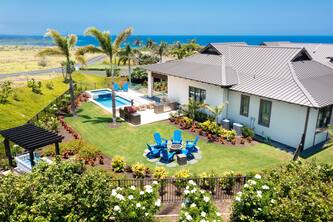Mookini Luakini Heiau

Mookini Luakini Heiau, located in remote North Kohala on the Big Island, is one of Hawai'i's most sacred and historically important temples. Built as early as AD 480 and later expanded by the Tahitian priest Pa'ao, the temple was dedicated to the war god Ku and used for human sacrifice. Today, Mookini Heiau remains a powerful site of reflection and cultural reverence, designated as a National Historic Landmark and open to respectful visitors.
Mookini Luakini Heiau, Big Island
Mookini Luakini Heiau in North Kohala is one of the oldest and most significant in all of Hawaii. A dramatic (and somewhat gruesome) history surrounds the heiau, which was built around AD 480.
About 500 years later, a Tahitian high priest named Pa'ao arrived and brought order and structure to the community. Unfortunately, this order came with a new tradition: human sacrifice. The heiau still bears the large, flat stone where actual human sacrifices were made, and some visitors swear they can feel the spirits roaming the temple.
However, the heiau wasn't purely a place of suffering. When there were no sacrifices, the priests allegedly used the temple to communicate with the gods and their long-dead ancestors.
Despite the air of dark mystery surrounding the place, Mookini is one of the most significant historic sites in Hawaii. After Pa'ao arrived, he wanted to enlarge the heiau. According to an oral legend, the stones for the temple were placed in a single night. About 18,000 warriors carried them here by hand, all the way from Pololu Valley 14 miles (22.5 km) away.
The heiau was designated as Hawaii's first registered National Historic Landmark in 1963. The stone structure is much smaller than it used to be in ancient times, but its remains still measure 250 feet (76 m) by 125 feet (38 m), with 6-foot (1.8 m) high walls.
Key Features of Mookini Luakini Heiau
- Ancient origins: Believed to have been constructed around AD 480, one of the oldest heiaus in Hawai'i
- Luakini temple: A state-level heiau dedicated to the war god Ku, used for human sacrifices and major ceremonies
- Expanded by Pa'ao: Reconstructed in the 12th century with legendary help from 18,000 warriors transporting stones
- National Historic Landmark: Designated in 1963 as the first registered Hawaiian landmark
- Massive dimensions: Remaining structure measures 250 by 125 feet with 6-foot-high lava rock walls
- Spiritual atmosphere: Visitors report a powerful presence at the site, believed to be connected to ancestral spirits
- Nearby royal site: Birthplace of King Kamehameha I is a short walk away on a nearby dirt trail
Frequently Asked Questions
What type of heiau is Mookini?
Mookini is a luakini heiau, a large state temple dedicated to the war god Ku and used for human sacrifices and royal religious ceremonies.
Who was Pa'ao and what is his connection to Mookini?
Pa'ao was a Tahitian priest who arrived in Hawai'i around the 12th century and is credited with restructuring Hawaiian religious practices, including expanding Mookini Heiau.
Where is the heiau located?
It is in North Kohala near Upolu Point. Access requires driving a rough dirt road or walking a short distance if the road is closed.
Can visitors enter the heiau?
Yes. Though once kapu (restricted), access was opened to the public in 1978. Visitors must stay on designated paths and show respect.
What other historical site is nearby?
The birthplace of King Kamehameha I is located just a short walk down a dirt path from Mookini Heiau.
















